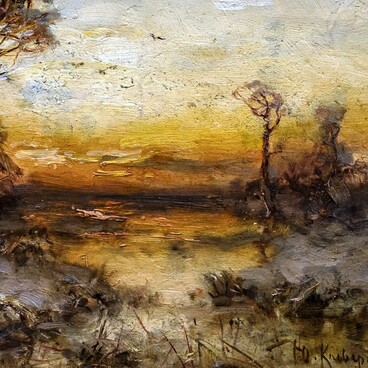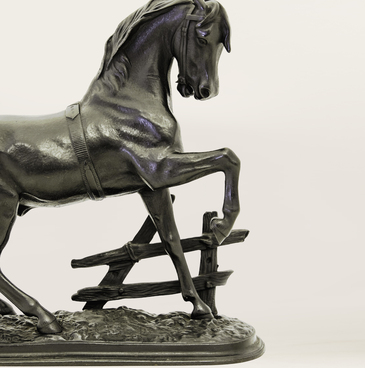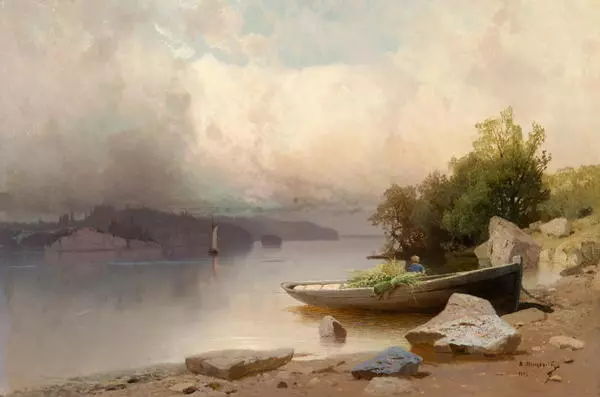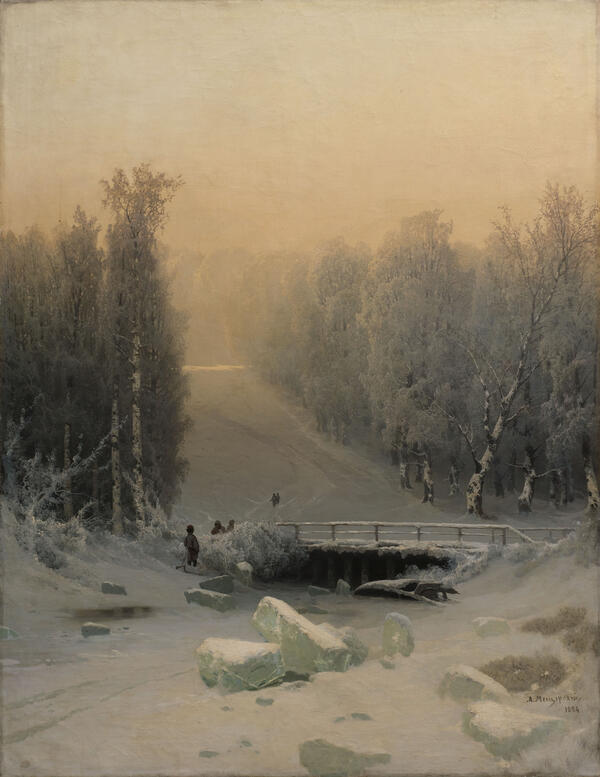Arseny Ivanovich Meshchersky was a painter and landscape artist. Meshchersky studied at the Imperial Academy of Arts under Fyodor Antonovich Bruni and Sokrat Maximovich Vorobyov. He also lived in Switzerland, where he took lessons from Alexander Kalam.
Meshchersky’s work mainly carried on the traditions of the late Romantic landscape of the mid-19th century, which merged with Russian academism in the second half of the 19th century. The newly emerged direction was called academic Romanticism. It was founded by Maxim Nikiforovich Vorobyov, who taught many landscape painters and established a long-standing landscape tradition, which was continued by his son — the artist and teacher Sokrat Maximovich Vorobyov.
“Winter Landscape” possesses many characteristic features of Arseny Meshchersky’s manner of painting.
The composition of the painting is asymmetrical. The pictorial space is reduced to the foreground and middle ground, with the background noticeably simplified. The stark contrast between the clear outlines of tree crowns and the hazy softness of the bush is the main pictorial motif of the landscape.
The genre element does not disturb the general state of contemplation and the poetic stillness of nature. The harmonious, restrained and somewhat limited color palette further emphasizes this state.
Meshchersky’s contemporaries wrote, “His best works are those that feature mountain landscapes and winter motifs. He has a broad and precise manner of painting; the combinations of tones in his paintings are incredibly harmonious… Meshchersky is a true poet with his brush — and so all his landscapes are imbued with poetry.”
Meshchersky lived in Saint Petersburg, teaching at the Academy and working on landscapes using various media — from watercolors and sepia to oil. The artist also worked with a broad range of subjects. He depicted views of Russian nature at any time of the year, the sea and mountains. His works are distinguished by the magnificent drawing technique, unique compositional structure and extraordinary rendering of the effects of light.
Meshchersky’s perfect drawing skills are present in all of his works, which is why he called himself a draftsman, believing that drawing is the cornerstone of the art of painting. His canvases can be studied at length by moving from one meticulously painted detail to another. By taking a look at the painting as a whole, it is easy to get completely immersed in the wonderful world of the corner of nature that the artist wanted to show his viewer.




